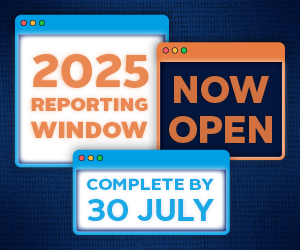By Gemma James, Senior lead, Environmental Issues, PRI

The first part of the 15th meeting of the Conference of the Parties (COP15) to the Convention on Biological Diversity (CBD) was held virtually between 11-15 October 2021. The aim of COP15 is to establish a Global Biodiversity Framework (GBF) which will set out a vision for worldwide action to preserve and protect nature. This is dubbed to be equivalent to the Paris Agreement for biodiversity. The second part will take place in-person in April 2022 in Kunming, China where the GBF will be formally adopted.
These meetings come at a time where biodiversity and ecosystem services are threatened[1] and building back better after COVID-19 acknowledges the fragile relationship that humans have with nature[2].
At the PRI’s Digital Conference, we held a discussion on the CBD COP15 and its relevance to investors. A diverse set of perspectives were sought from Federated Hermes, UK Department for Environment, Food & Rural Affairs (DEFRA), Association of Indigenous Women and Peoples of Chad and the University of Minnesota.
Facilitate the recovery of natural ecosystems as well as contribute to achieving the Paris Agreement on climate, as biodiversity and climate change are intrinsically interconnected.
Elizbeth Maruma Mrema, Executive Secretary of the CBD, opened the session highlighting the role of investors
The panel discussion ranged from the role of indigenous peoples in managing biodiversity and ecosystem services to understanding the challenges, expectations and implications of forming and implementing an ambitious GBF. Some of the discussion points are reflected below.
Stakeholder involvement is crucial
The first part of COP15 saw parties show their willingness to commit to an ambitious post-2020 GBF through the adoption of the Kunming Declaration. The meetings were described as a “ceremonial opening” with statements and contributions made from different stakeholders reflecting the holistic approach required to solve a systemic problem.
It is prudent to mention that all stakeholders have a role in the solution. It is not only the governments who are agreeing on the GBF. Investors need to align their portfolios with the GBF to ensure that investments do no harm to nature but also encourage positive outcomes. Indigenous Peoples depend on nature for their daily survival and are already stewards of biodiversity. Their rights must be respected, and they need to be part of the decision making.
Which targets should investors keep an eye on?
There are 21 action targets in the GBF and some targets are relevant for investors to align with their activities as well as their investees.
Target 15 expects all businesses to: a) assess and report on their dependencies and impacts on biodiversity, b) reduce negative impacts by at least half, and c) increase positive impacts. This is to reduce risk and move towards more sustainable business models and practices. It is anticipated that the forthcoming Task Force on Nature-related Financial Disclosures will facilitate the implementation of this target.
Target 14 indicates the integration of biodiversity into policies, regulations and incentives at all levels of government and across all sectors of the economy, ensuring that all activities and financial flows are aligned with biodiversity values. This alignment of financial flows reflects the call for financial institutions to be recognised in the GBF[3].
Other targets such as Target 7 about the reduction of pollution with specific mention of pesticides and plastic waste are relevant for investees. Similarly, Target 10 which focuses on agriculture, aquaculture and forestry to be sustainably managed is also relevant.
What policy changes can be anticipated?
Implementation of the framework would require the targets to be interpreted into national and regional policies and regulations. During the discussion at COP15, Amundi’s Jean-Jacques Barbéris representing the Finance for Biodiversity Foundation called for more regulation to ensure that private sector aligns their activities and financial flows to the goals and targets.
Based on the targets mentioned above, here are some examples of policies to look out for:
- Financial disclosure on nature related risks: Article 29 of the Energy-climate law in France requires the disclosure of biodiversity risks and adverse impacts. This includes the strategy for reducing biodiversity impacts with targets and alignment with international biodiversity goals. In the UK, Greening Finance: a roadmap to sustainable investing[4] was recently released. This includes the development of the UK Green Taxonomy that will include protection and restoration of biodiversity and ecosystems.
- Changes to subsidies that are harmful towards nature: this could be subsidies which are provided to fossil fuels, incentivise over-fishing and unsustainable agriculture.
- UN Treaty on plastic pollution: The first-ever ministerial conference on marine litter and plastic pollution in September 2021 saw the introduction of a draft resolution recommending a legally binding global mechanism to address the plastic crisis. Next year, there will be a vote to decide whether negotiations for a new agreement will go ahead.
- Supply chain due diligence legislation on forest commodities: In the EU and UK, legislation is being established requiring companies to conduct due diligence to identify deforestation in supply chains.
How is the PRI supporting investors to align with nature goals?
Until recently, the CBD and investors had not engaged and had limited awareness and understanding of each other. To rectify this, CBD’s dedicated finance workstream held a workshop in June 2021, supported by the PRI , to facilitate a dialogue between the financial community and Parties on how the finance sector can contribute to the post-2020 GBF.
To facilitate the financial sector’s understanding of the CBD COP15, PRI collaborated with CBD, UNEP FI, Business for Nature and Finance for Biodiversity Pledge to produce a guide on the process and relevance for investors.
PRI recognises the links between nature and climate and will be participating at COP26 to advocate for government and investor actions towards net zero. Given that deforestation is a main driver of biodiversity loss and a major emitter of greenhouse gas emissions, PRI is supporting the Deforestation Free Finance campaign at the World Leaders Summit in partnership with DEFRA, the High Level Champions and others where PRI’s Sustainable Commodities Practitioners Group will be showcased.
Significant progress on deforestation is required to reach the Paris Agreement goals given the carbon emission contributions but also the mitigation opportunity through protecting and restoring forests and other native vegetation.
The PRI has a range of resources to support investors to align with nature goals including:
- The Sustainable Commodities Practitioners’ Group (SCPG) brings PRI signatories together to align their asks, metrics, and practices in collaboration with technical experts. Currently, 59 individuals from 45 investors, representing $29 Trillion USD of assets under management participate in the SCPG.
- PRI’s Plastic Investor Working Group builds the capacity of investors to engage with companies to:
- eliminate the production and use of problematic or unnecessary plastics;
- ensure that all plastics are reusable, recyclable, or compostable; and
- circulate materials to keep plastics in the economy and out of the environment.
- Investor action on biodiversity: discussion paper
- Maps of natural capital hotspots of depletion
This blog is written by PRI staff members and guest contributors. Our goal is to contribute to the broader debate around topical issues and to help showcase some of our research and other work that we undertake in support of our signatories.Please note that although you can expect to find some posts here that broadly accord with the PRI’s official views, the blog authors write in their individual capacity and there is no “house view”. Nor do the views and opinions expressed on this blog constitute financial or other professional advice.If you have any questions, please contact us at [email protected].
References
[1] IPBES (2019): Summary for policymakers of the global assessment report on biodiversity and ecosystem services of the Intergovernmental Science-Policy Platform on Biodiversity and Ecosystem Services.
[2]https://news.un.org/en/story/2020/05/1064752
[3]https://www.financeforbiodiversity.org/wp-content/uploads/FfB-Foundation_CBD-Open-Ended-Working-Group-25-August-2021.pdf
[4]https://www.gov.uk/government/publications/greening-finance-a-roadmap-to-sustainable-investing












